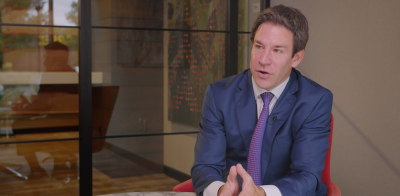As the latest bear market rally of 2022 continues, let me reiterate the main Galactic Mean Reversion survival tips for advisors and their clients:
Protect capital: Don’t be a hero.
Don’t chase bear market rallies in equities or fixed income: Use them as an opportunity to lighten up on beta and duration.
Prioritize economically resilient cash flows and total returns.
Roll up the capital structure: Lock in gains, improve income and total return, and minimize downside risk by moving up the real estate capital structure.
Focus on strategies in the northwest quadrant of the efficient frontier1: For the majority of your capital allocation, pursue strategies that offer a low risk of loss and low volatility. Finding strategies that have a fighting chance to generate mid-to high-single digit returns are like an oasis in the desert.
Don’t fight the Fed, high five the Fed: Focus on high quality floating rate assets.
Fight inertia: Embrace democratized alternatives.
However, we rarely meet investors who will—or even should—put their entire portfolio in alternatives or cash (even in today’s choppy, sloppy, messy environment). So, where should investors focus the riskier assets in their portfolios? Well, let us revisit the concept we first highlighted in our first strategy note of 2022: Cash flow is king. So, what does that mean in the current market environment?
- Whether an investor is analyzing a security (debt or equity), a sector, a geographic region, an illiquid asset or a strategy, cash flows historically tend to be much more resilient than market prices/valuations. Also, cash flows may be more durable in market dislocations or valuation adjustments (see Galactic Mean Reversion) than investments that are more focused on events, growth or transformative change with little to no cash flow.
- There are certainly environments like 1999 and 2021, where capital appreciation is king, or also known as green light, go environments. But guess what? Calendar years 2022 and 2023 (or orange light, extra caution environments) aren’t one of them!
- In strategies with high levels of cash flow, an investor does not rely on price appreciation to generate attractive returns.
- If cash flow levels are high enough, investors may potentially experience some degree of price declines and still have a positive outcome and/or may potentially break even over a reasonable time period.
- For strategies that generate cash flow, theoretically nothing needs to happen to generate a positive return. If prices don’t go up? Who cares. No event to drive value creation? No big deal. Market participants don’t buy what you own? No worries. You just need the cash flow to be high enough to offset price declines and/or realized losses caused by defaults (if the strategy is focused on credit).
- Strategies that have high levels of durable cash flow and reasonable prices/valuations tend to be positively convex (potentially more upside than downside) even in more volatile market environments because the cash flow acts as a buffer to swing in price.
- However, if the cash flow is not sufficient to offset price declines during a bear market, an investor could suffer mark to market losses. Furthermore, if default rates and realized losses on credit investments exceed income, there could be a period of net asset value and market value/price decline.
For the segment of your portfolio and asset allocation where volatility and risk can be tolerated, cash flow is king. If you are willing to tolerate higher levels of volatility and risk, having a handsome level of cash flow paid out as income or a dividend is an advantage. Heck, if you are going to take risk in an environment like this, make sure you’re getting paid for it.
One additional point: Never underestimate the power of permanent or long-dated capital in order to generate more attractive absolute and risk-adjusted returns in any market environment and particularly one in a sloppy, choppy mess. Permanent capital allows the investment manager to take advantage of market dislocations and go after the best opportunities without looking over their shoulder to meet redemptions or outflows. As market liquidity has dried up since the regulatory reforms of the banking system drove proprietary trading desks and market makers out of business, price dislocations have become more common. It is challenging to maximize these opportunities in a fund structure, like a credit mutual fund or reasonably liquid hedge fund, because of the necessity for the investment manager to provide liquidity to investors at such short notice. In permanent capital vehicles, however, the investment manager can focus solely on maximizing client absolute and risk-adjusted returns. It’s also a heck of a lot easier to solely focus on what’s in front of you than constantly having to watch your back!
As the Galactic Mean Reversion rolls on, keep it simple for the segment of your portfolio where you can tolerate more risk and volatility in order to potentially generate higher returns over time. Focus on cash flow-generating strategies that have high levels of income, potentially trade at discounts to NAV, may continue to benefit from additional Fed rate hikes and can maximize the advantage of permanent or long lock-up capital.
Cash flow is king, long live the king!




